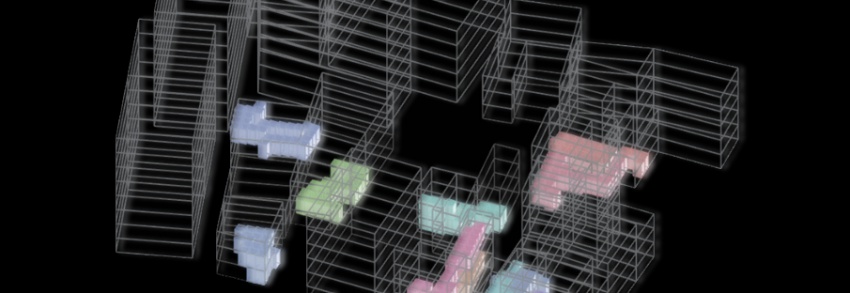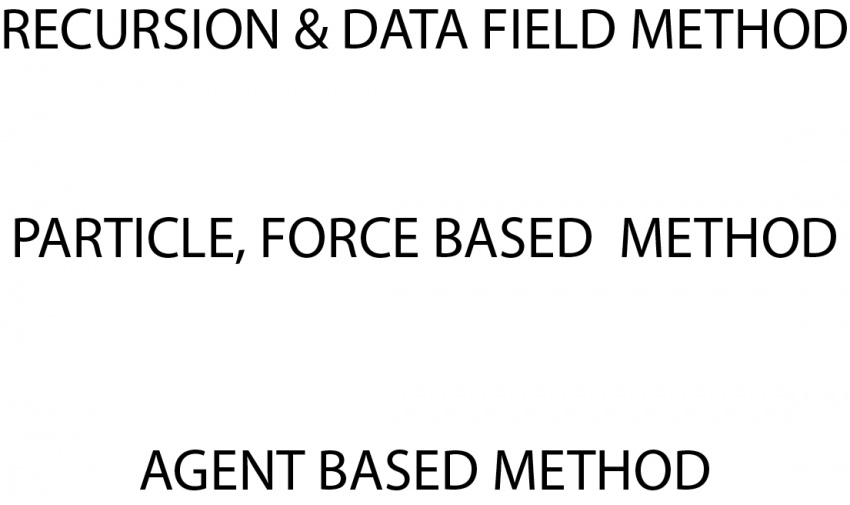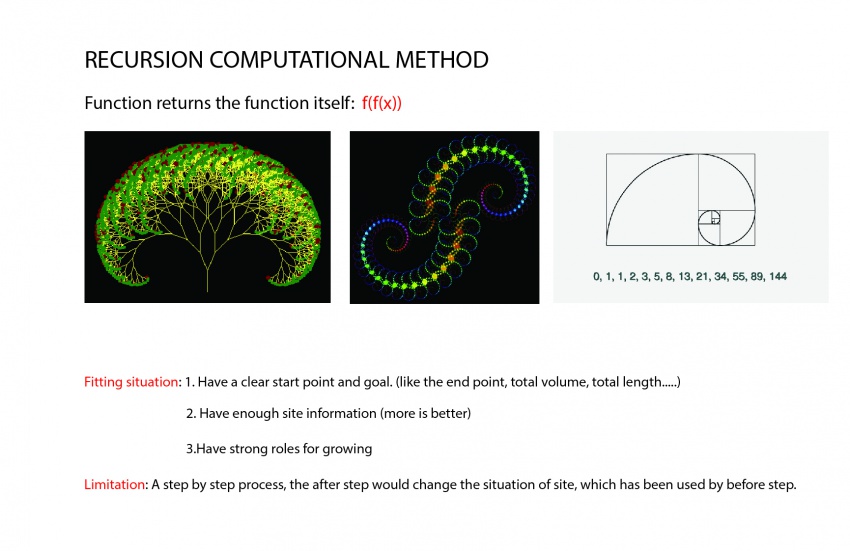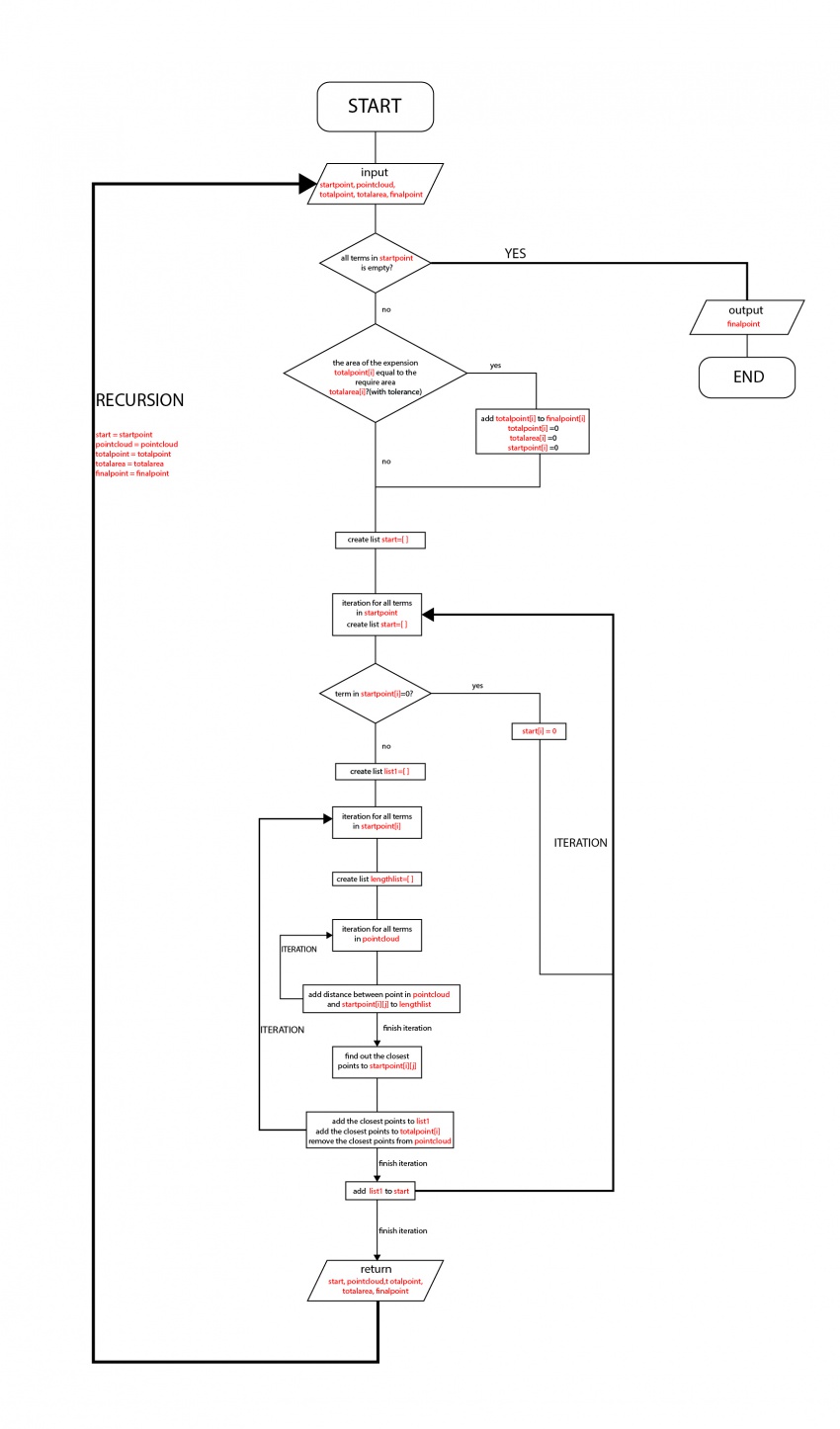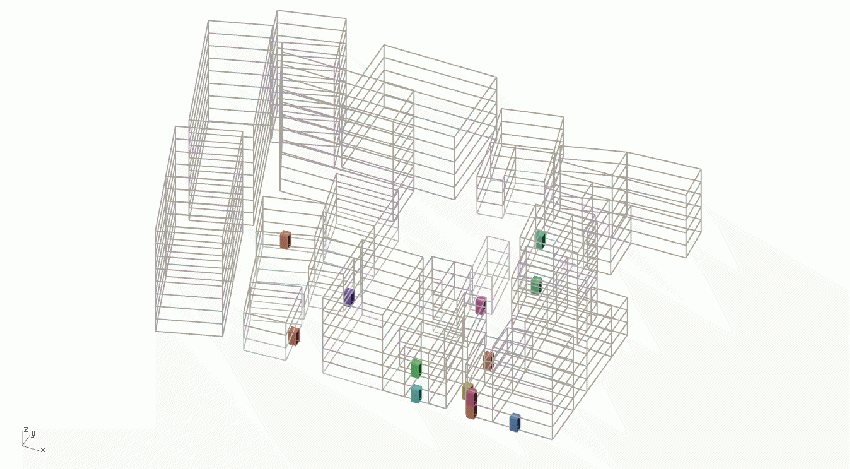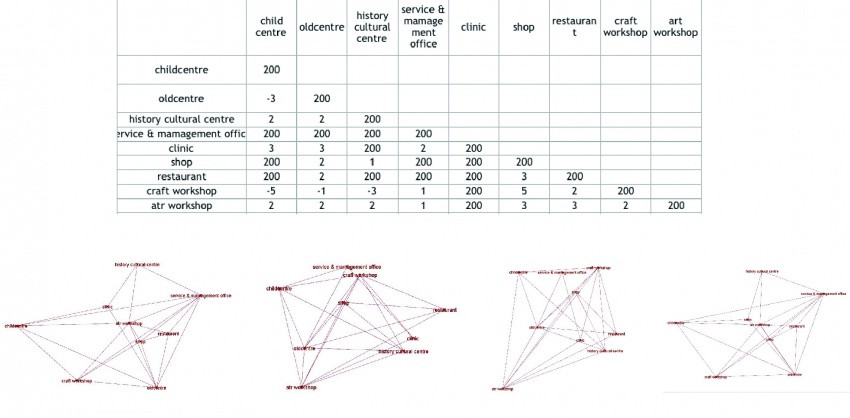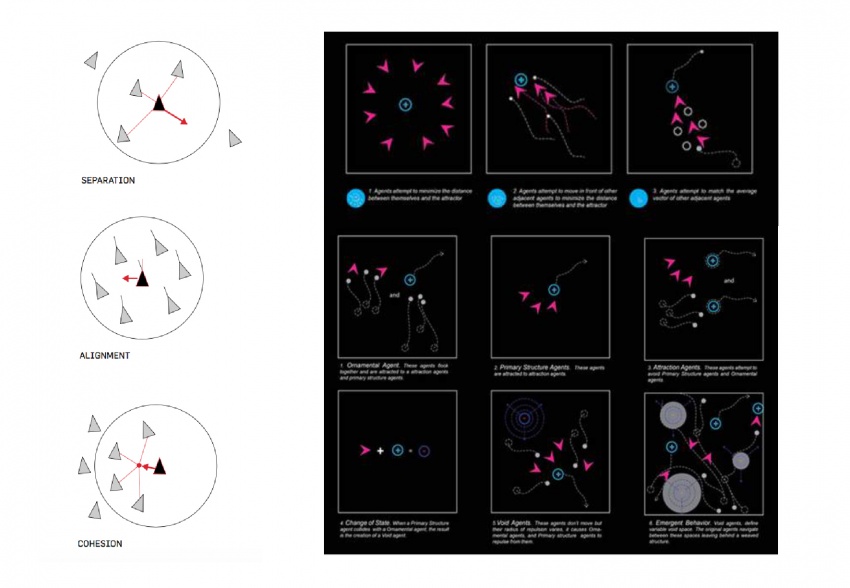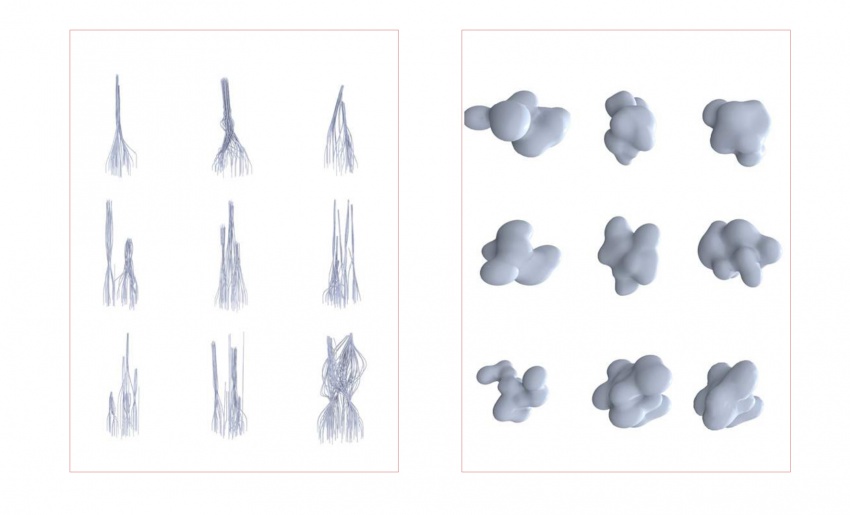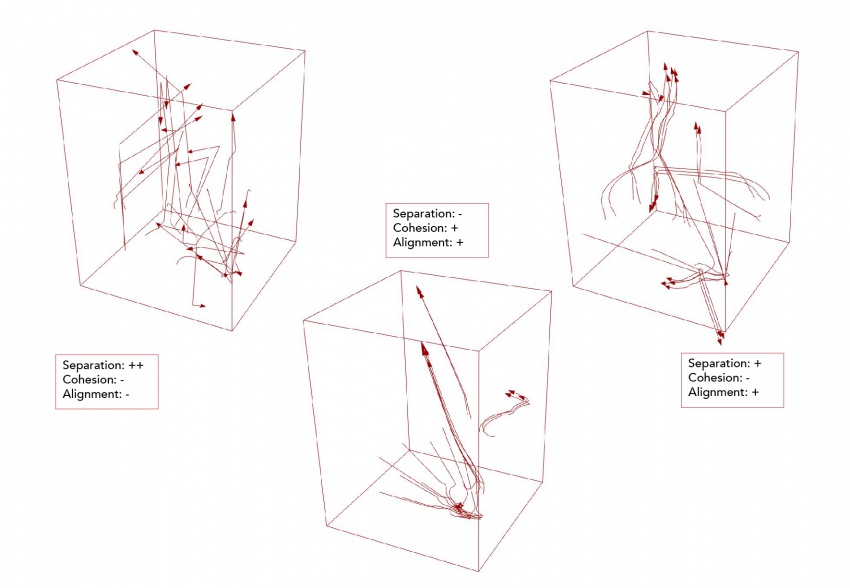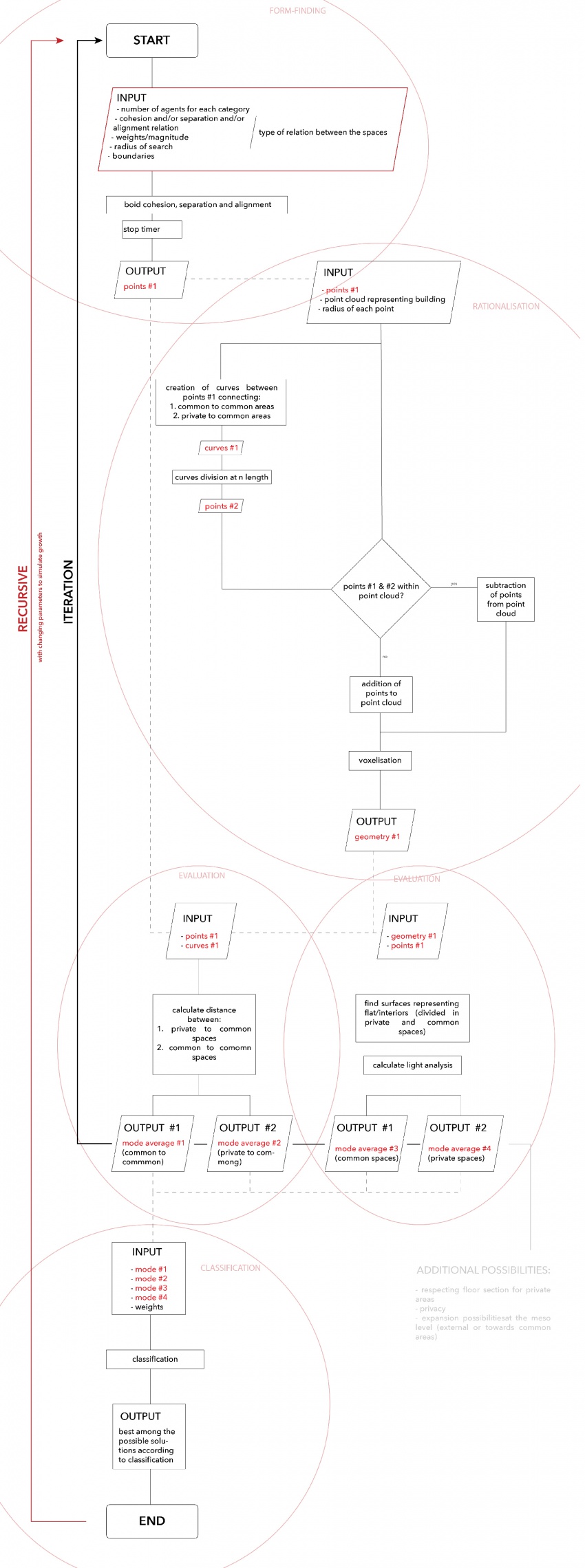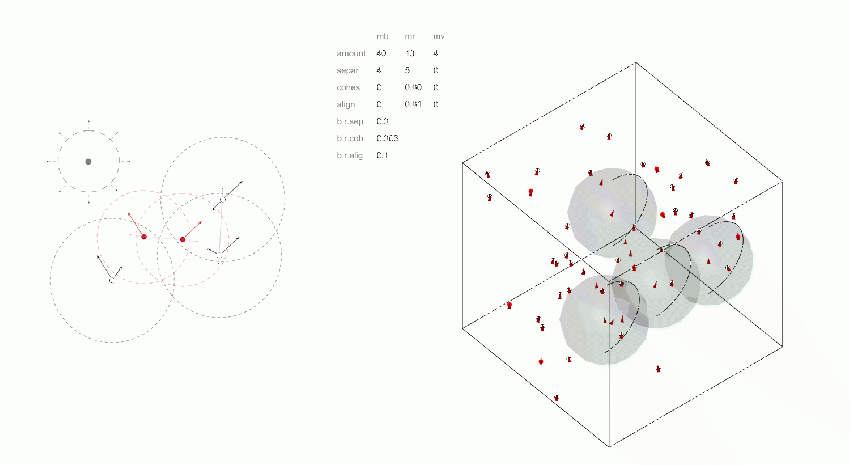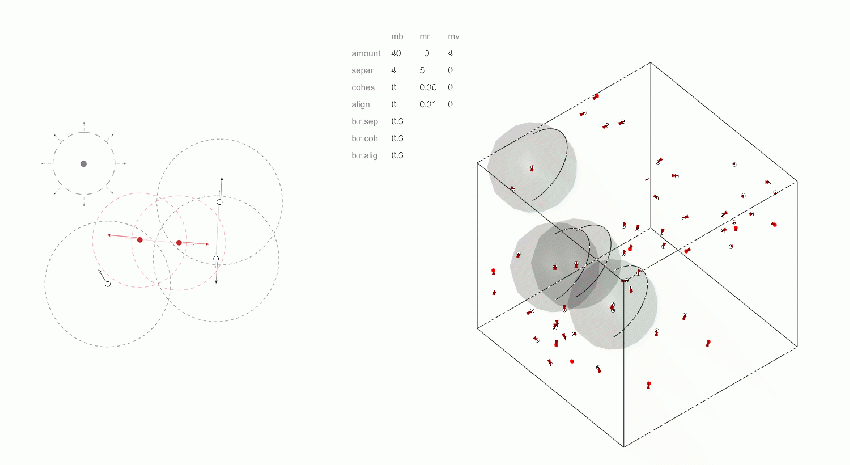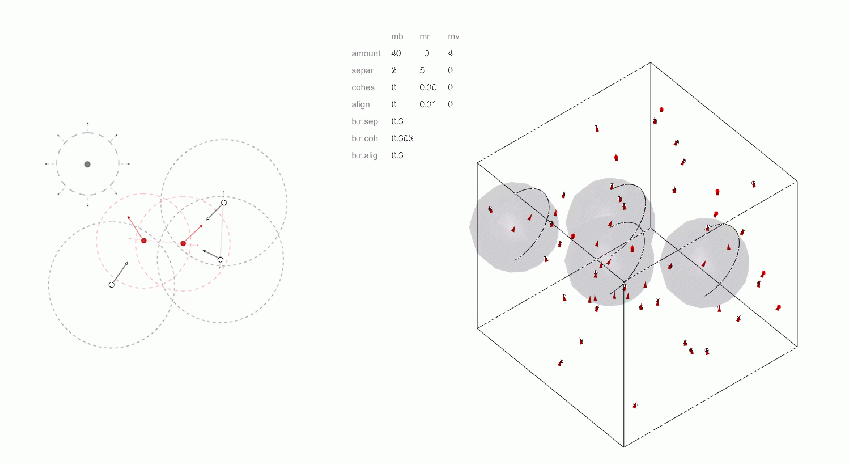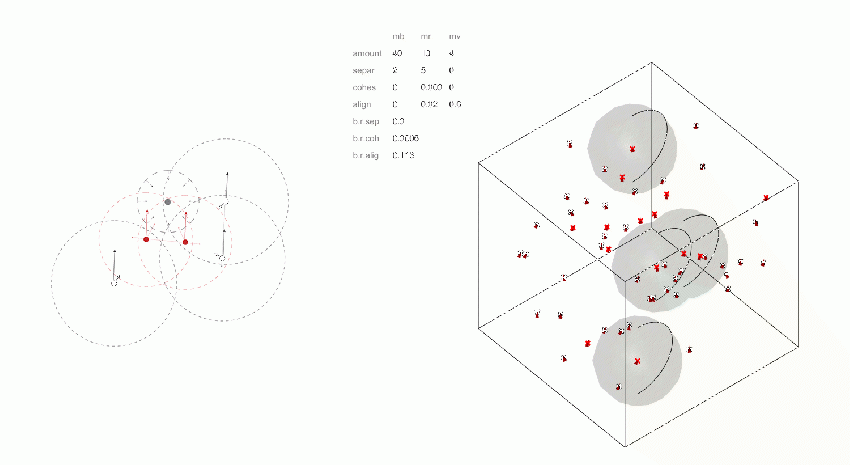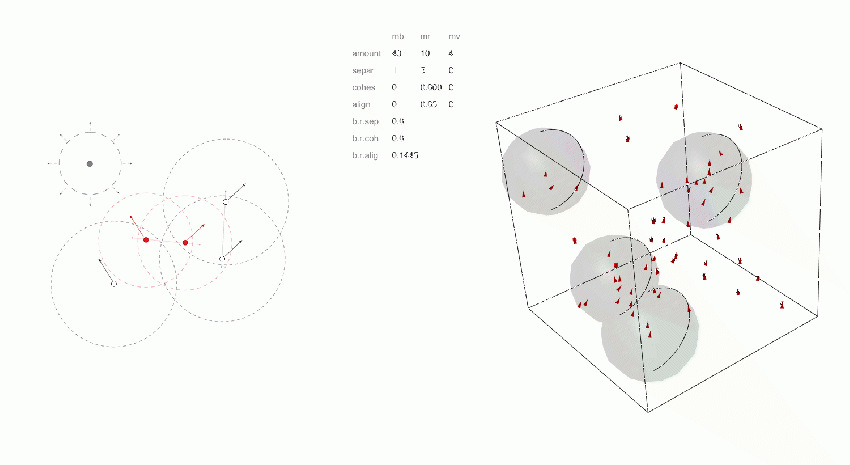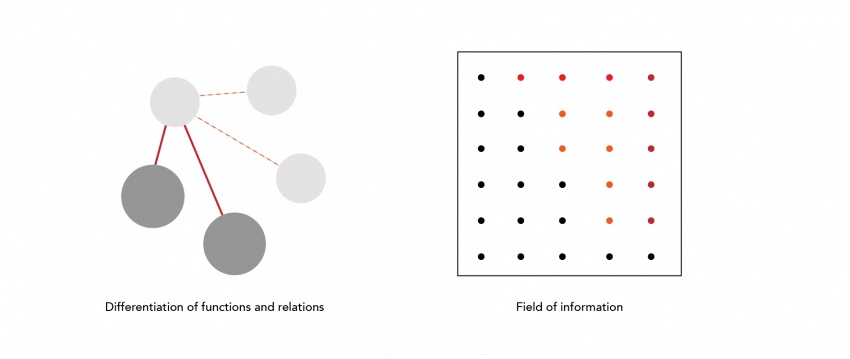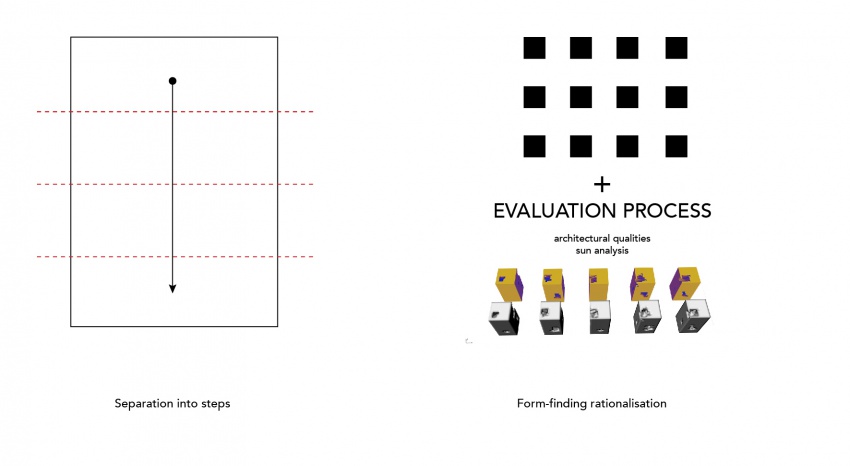Difference between revisions of "project12:W3MSc3TUD"
(→Flow chart) |
(→Flow chart) |
||
| Line 39: | Line 39: | ||
===Flow chart=== | ===Flow chart=== | ||
| − | + | ||
| − | + | ||
| − | + | .[[File: EZW3flowchart.jpg| 850px]] | |
| − | + | ||
| − | [[File: EZW3flowchart.jpg| 850px]] | + | |
== Experiment 1 == | == Experiment 1 == | ||
Revision as of 21:41, 23 December 2017
MSc3 TUD
Recursive and data field method - Chong Du
Particle based method - Rosanne le Roij
Agent-based method - Erik Zanetti
In this workshop the aim was to create a computational logic for function distribution through agent-based modelling. Agent-based design is based on Boids, the artificial life programme developed by Craig Reynolds, which follows three rules: separation, alignment and cohesion. Each of these rules is also assigned a weight. Complexity can be added by introducing obstacle avoidance and aim seeking, and by creating different categories of agents, with different weight of rules and different types of relations among the categories. Differently from other computational logics that were implemented in the workshop, such as the recursive method, agent-based modelling does not have only one single possible output. Rather, there are a series of possible outcomes and in order to have a solution, one must stop the timer. This however means that a process of rationalisation and evaluation must take place afterwards. In fact, the design process was fragmented into different interconnected steps. The first is represented by the form-finding, i.e. agent-based modelling proper, the second by the rationalisation process, i.e. the transformation of data into geometrical forms, and finally the evaluation process. However, several iterations until the level of rationalisation must be carried out for the evaluation process to take place. The idea for the project would also be that not the entire system (building) is taken into consideration form the beginning but it would be a stepped process. In this way it could be simulated a process with changing conditions in time. For the workshop, the focus was on the form-finding process. Three types of agents were created: “primary”, “secondary”and “stationary”. The primary would represent, for instance, the public spaces to which the private ones (secondary) must always be connected and therefore depend on. Stationary would either be repulsive, representing for instance parts of the building that needs to be left empty or in the current conditions, or attractive, representing spatial goals for the agents. Experiments were carried out in order to visually output the differences created by modifying the weights of these relations.
Flow chart
Experiment 1
Black: High separation Red: High separation, high cohesion to black, medium alignment to black Grey: Void agent (repulsion of red and black)
Experiment 2
Black: High separation Red: High separation, no cohesion to black, no alignment to black Grey: Void agent (repulsion of red and black)
Experiment 3
Black: High separation Red: High separation, medium cohesion to black, no alignment to black Grey: Void agent (repulsion of red and black)
Experiment 4
Black: High separation Red: Medium separation, low cohesion to black, medium alignment to black Grey: Attraction agent (attraction of red and black)
Experiment 5
Black: High separation, medium alignment Red: Low separation, no cohesion to black, high alignment to black Grey: Void agent (repulsion of red and black)
Minimal path and agents - Jihong Duan
